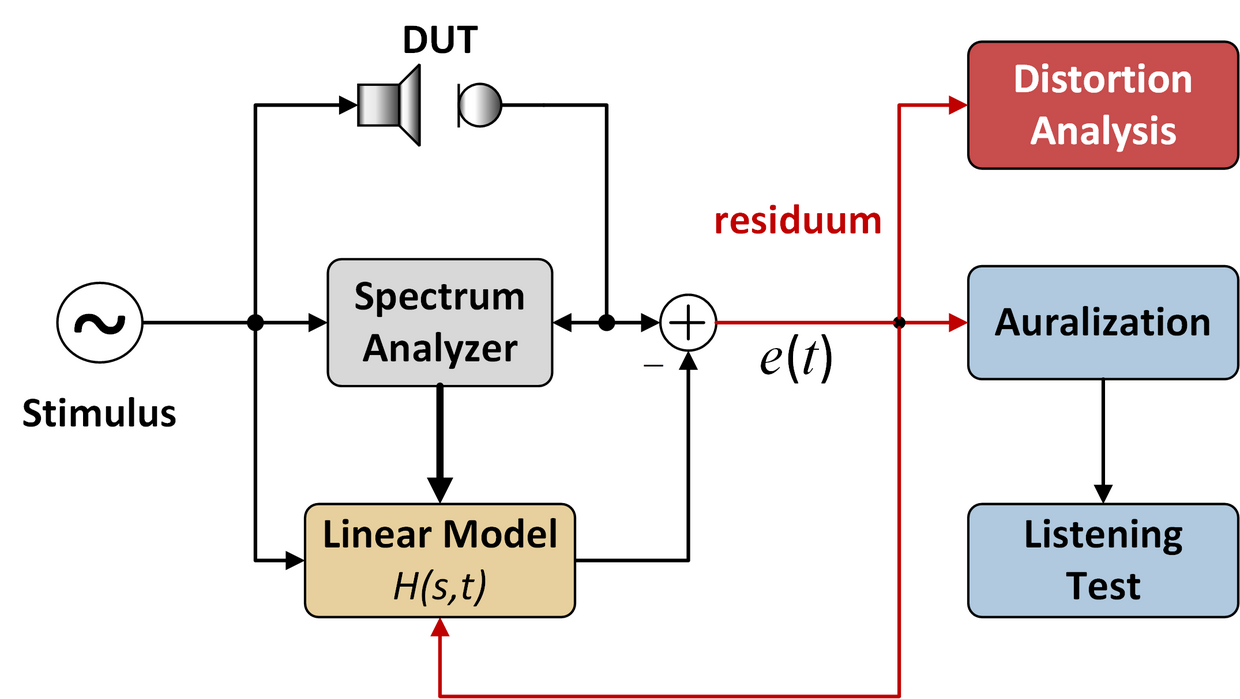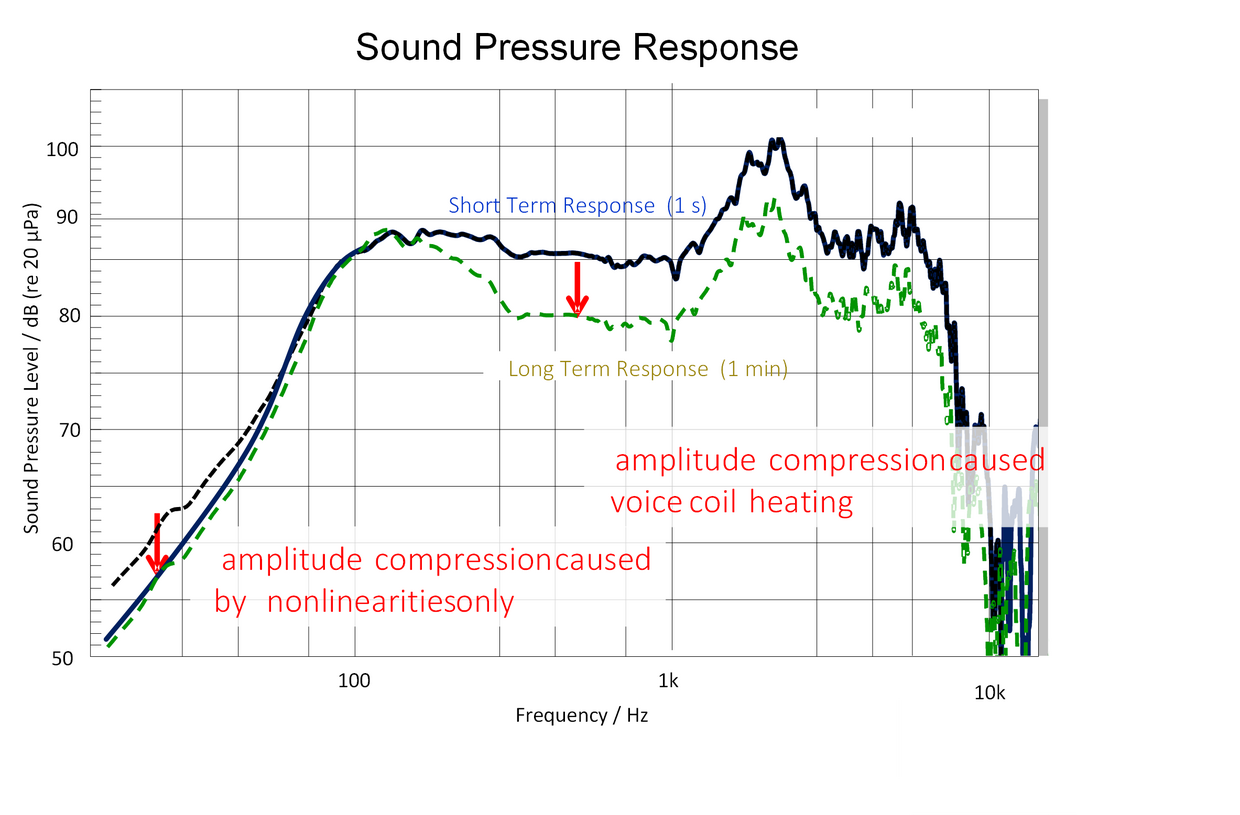Nonlinear Residual Analyzer (NRL) & Live Audio Analyzer (LAA)
Nonlinear Residual Analyzer (NRL)
Active module (pre-release status) and available from dB-Lab 212
Features and Benefits
- Spectrum analyzer with an arbitrary stimulus (e.g., music)
- Monitoring of time-variant and time-invariant linear transfer function
- Distortion separation (harmonic, intermodulation, rub & buzz)
- Listen to isolated distortion
- Applicable to any audio system and transducer
The Nonlinear Residual Analyzer (NRL) is a tool dedicated to measuring active or passive audio systems with music, speech, or any other test signal. Based on the monitored signals, the NRL determines the linear transfer function of the device under test adaptively and separates the linear response from distortion components (e.g., non-linear or Rub&Buzz). This combination of modern measurement and listening techniques (auralization) helps to understand and evaluate the sound quality of your audio product.
Identification and Monitoring
The NRL can be operated as a spectrum analyzer and beyond that, the transfer function between two signals is identified adaptively. That means, if the transfer function changes during the test, the modeling adjusts itself. This can be used to determine the long-term properties of loudspeaker systems.
Applications include the investigation of heating effects, the drift of transfer function, and durability tests.
Distortion Separation and Auralization
Live Audio Analyzer (LAA)
Deprecated module and available in dB-Lab 210 only
Features and Benefits
- Long-term monitoring
- Active and passive systems
- Assesses heating and aging
- Distortion measurement with music
- Physical and perceptual evaluation
To evaluate the performance of active and passive audio systems under normal operating conditions, the Live Audio Analyzer (LAA) can monitor up to 5 signals simultaneously, and examine both time and frequency data. Using arbitrary audio signals, such as music or speech, as well as dedicated test signals (multi-tone, chirp, single/two tone), critical applications can be identified and analysed. The LAA monitors terminal voltage, input current, voice coil displacement, as well as sound pressure output.
Employing adaptive modelling, the time-varying properties (such as heat or visco-elastic changes) can be captured, as well regular and irregular distortion isolated. Thus, triggers using both monitored state signal, as well as distortion measures, help to store only parts of interest. In addition, the impacts and causes of distortion effects can be identified and auralized.
Specification
Requirements
Hardware
• Klippel Analyzer 3 Hardware
Accessories
• Power Amplifier
• Laser (optional, for displacement monitoring)
• Microphone (optional, for sound pressure monitoring)
• PC
Related Modules
Standards
Consumer Electronics Association
CEA-CEB19, CEA-2006-A, CEA-2019, CEA-2031
International Electrotechnical Commission
IEC 60268-21, IEC 60268-22, IEC WD 63034
European Standards
BS EN 50332





